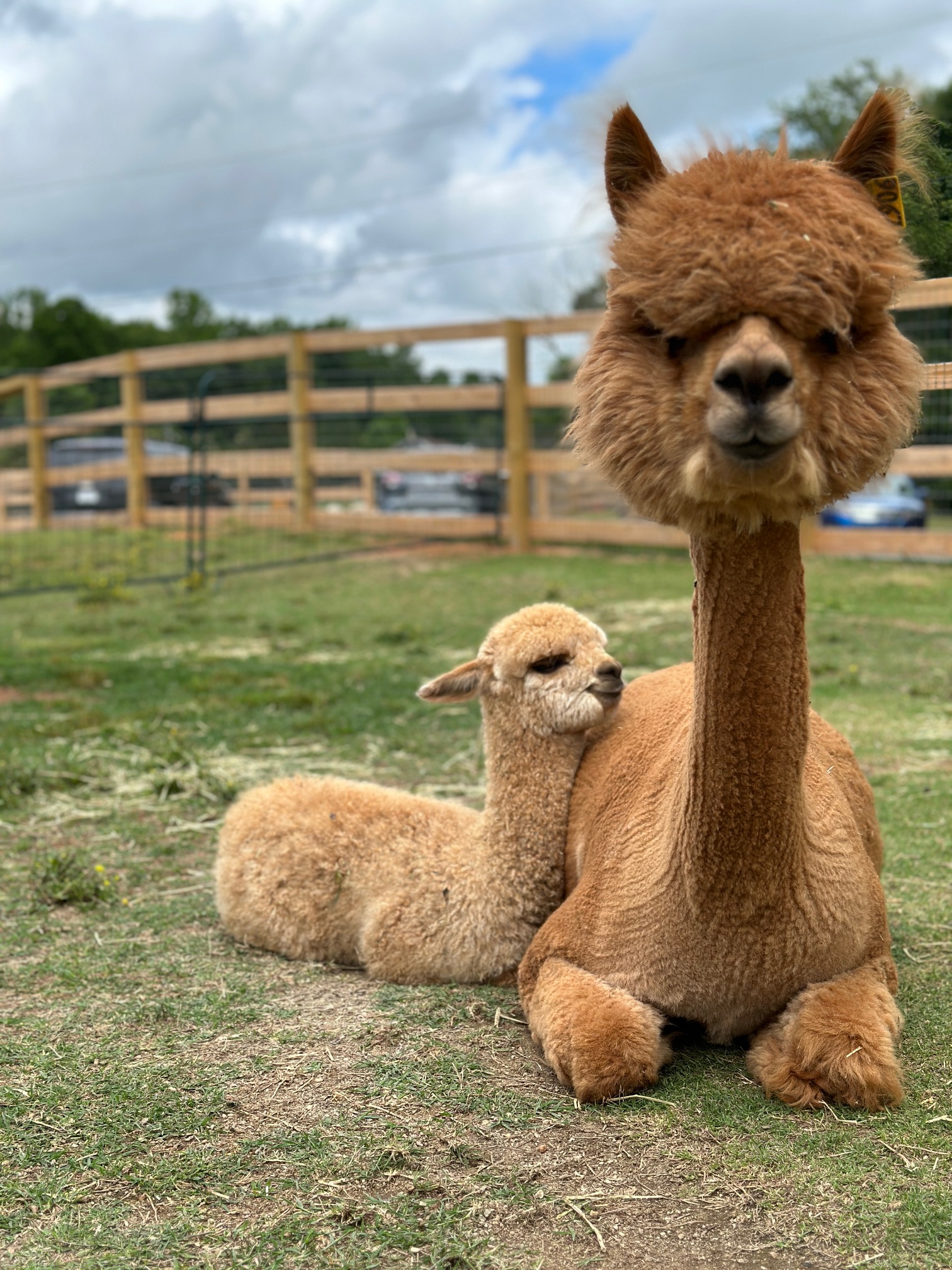Alpaca Facts

Since ancient times, the South American Andes Mountains have been the ancestral home to the prized alpaca. Their fleece was cherished by members of the Incan civilization (referred to as "The Fiber of the Gods"), and their graceful herds of alpaca roamed the lush foothills and mountainous pastures. In the 17th century, Spanish conquistadors killed a large part of both the Incan and alpaca populations, forcing the retreating survivors to seek refuge in the high mountain plains known as the Altiplano. The high altitude and harsh landscape ensured only the hardest of these creatures survived, and these ancestors of today's best bloodlines have provided a gene pool producing hardy, agile animals with dense, high quality fiber.
In 1984, a small group of importers brought the first of a carefully selected herd of highest quality alpacas into the United States and Canada, and they immediately became a beloved part of the North American landscape.
Key Data and Facts
Peru, Bolivia, and Chile are still home to the largest percentage of alpacas in the world, and alpaca breeders in the United States have learned much from their southern neighbors.
Alpacas are a member of the camelid family, which also includes dromedary and Bactrian camels, llamas, vicunas, and guanacos. They are a modified ruminant and chew their cud similar to a cow, although they have three stomach compartments rather than the true ruminant, which has four. Alpacas selectively graze, eating pasture grasses and hay, a fact that makes feeding alpacas relatively inexpensive. A daily mineral supplement rounds out their diet.
There are two different types of alpacas types, the suri and the huacaya. The suri has fiber that grows quite long and forms silky, pencil-like locks. The huacaya has a shorter, dense, crimpy fleece, giving it a very woolly appearance.
Alpacas have soft padded feet, making them gentle on their pastures, and they have no top teeth in the front. The average height of an alpaca is 36" at the withers, and they weigh from 100 to 200 pounds. Alpacas are small and gentle enough to travel short distances in the family minivan and are easily handled by most people.
Alpacas have a life span of 15 to 20 years, they have a long reproductive life, and they will provide fleece for a lifetime. This allows alpaca owners to create multiple revenue streams if owning alpacas as a business.
An alpaca's gestation period is 11 to 12 months, and they have single births (twins are extremely rare). A baby alpaca, called a cria, usually weighs between 15 and 20 pounds.
Alpaca fiber comes in 22 colors that are recognized by the textile industry, and there are many blends in addition to that. Alpacas are shorn for their wonderful fleece each year, which will produce 5 to 10 pounds of soft, warm fiber that is turned into the most luxurious garments in the world. When it comes to raising alpacas, there is something for everyone.
Alpacas communicate mostly by humming and clucking, except for some sounds specific to breeding or alarm calls. They are a calm, quiet, peaceful, and easy-to-raise form of livestock.
Alpacas are smart animals and are fairly easy to train. They can learn to compete in obstacle courses and jump small hurdles.
Raising Alpacas
Raising alpacas is a lifestyle and investment suitable for virtually all stages of life. From a family with children to the professional looking for better work-life balance or empty-nesters seeking a revenue generating hobby, the alpaca lifestyle is appealing.
While the individuals and families who have decided to experience the alpaca adventure are widely diverse in their backgrounds, they share a common love for animals and a desire to remove stress from their lives. Alpacas meet the qualifications for such a lifestyle effortlessly.
Families with children will appreciate how alpacas are gentle and easy to handle, and they may want to become involved in the many family-oriented events around the country. Alpacas are often used within livestock fairs, 4-H and FFA groups, auctions, official alpaca shows, and on-the-farm activities like agritourism, interactive tours, or alpaca trekking.
The highly prized fleece of the alpaca has inspired many to start in-home "cottage industries" which involve shearing the alpacas and spinning the fiber of their own animals into yarn that can be made into high quality apparel while others market the fiber through the support of organized fiber co-ops.
Alpacas require a small amount of acreage compared to other livestock, with the average farm having less than 10 acres. They eat pasture grasses and hay. While alpacas require shelter from the elements, in some parts of the country a small three-sided barn or shelter is adequate for a limited sized herd..
Alpaca breeders from all walks of life interact with each other by participating in shows and open houses, co-owning animals, and by sharing their acquired expertise. This mutual interest and support has been the start of many lifelong friendships. The pleasure of owning the beautiful and gentle alpaca is a reward in itself. The prospect of enjoying shared family activities with this very huggable animal while reaping the financial rewards of owning and breeding alpacas increases the pleasure many times over.
Raising alpacas is a labor of love. The escape from a fast-paced urban lifestyle to the quiet, pastoral surroundings of raising and breeding alpacas is a prescription for healthier, less stressful living!
Some of these facts have been extracted by the Alpaca Owners Association's Alpaca Fun Facts brochure.
